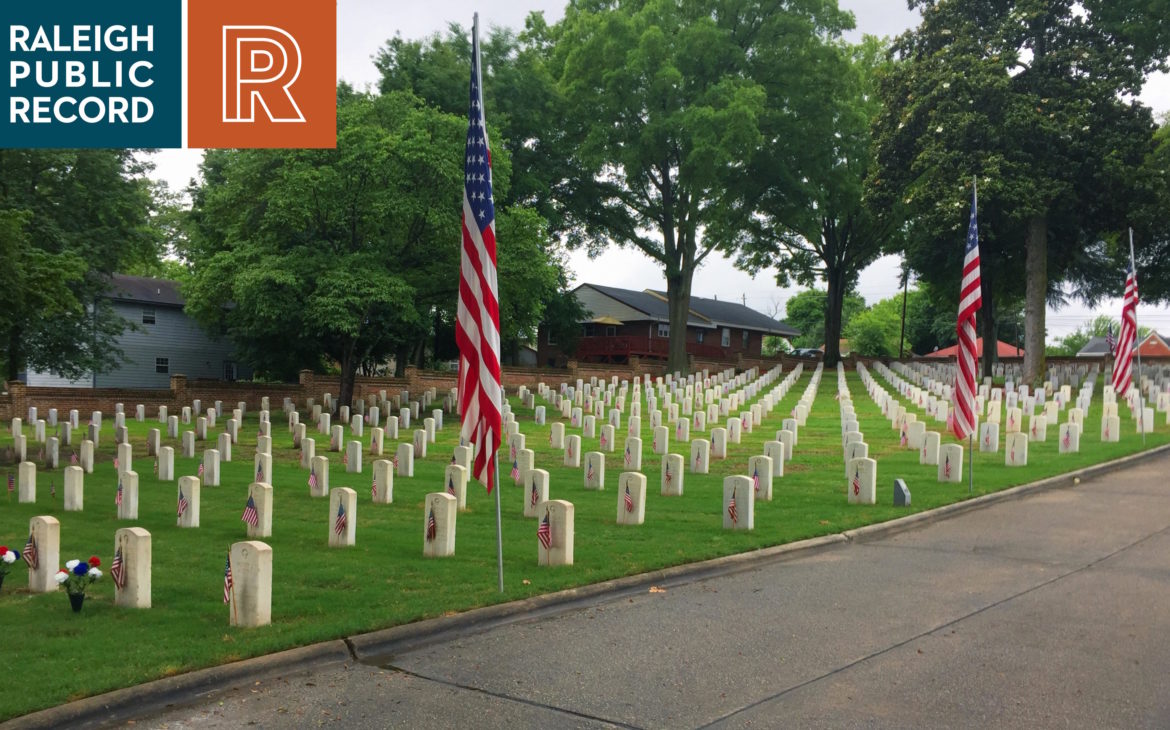Brought to you by Rufty-Peedin Design Build
Monday, May 30, 2016
The seven-acre Raleigh National Cemetery was first established as a final resting place for military veterans in 1865, on the site of the former Union military post Fort Green.
Closed to new burials, the site, located on Rock Quarry Road in South Raleigh, currently has 5,983 internments. While each one of the souls laid to rest at the cemetery doubtless has a fascinating, heroic story to tell, we’re going to focus today on the history of the site, as well as some of those who fought to preserve it.
Although we normally delve into building details, we’ll just cut to the chase and say that the two-story, six-room Colonial Revival lodge house on the property was not built until 1938. We’re going back a bit further.
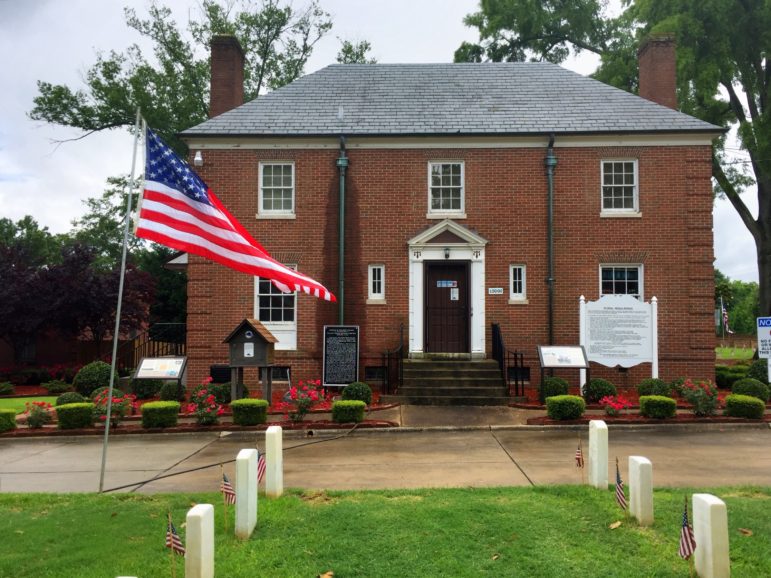
James Borden
This lodge was built in 1938
While the 1865 date is what’s listed on the official Veteran’s Affairs website, as well as Wikipedia, I was unable to find any specific documentation backing this up. As mentioned, it had previously been home to a Union outpost, but by 1865, the site was serving as a burial ground for both the Confederate and the Union dead.
An edict from the Federal government would soon change that.
According to Elizabeth Waugh, “Early in January, 1867, or perhaps December, 1866, the Federal government sent an agent to Raleigh to select a location for a Federal cemetery.
“He selected and confiscated the Rock Quarry cemetery where the Federal and Confederate dead were resting.”
This agent, Waugh said, “had not the patience to wait until the new place for the Confederate dead was in a state of readiness…and ultimately threatened that if they were not removed by a certain day, they would be dug up and thrown into the public road.”
Unfortunately, this agent of the Federal government was not drawn and quartered by an unruly mob of local citizens;thanks to the efforts of the Ladies Memorial Association of Wake County, Raleigh residents reacted in quite a different way.
Formed in May of 1866, the Association set out to care for the graves of Confederate soldiers and to “select a suitable and permanent resting place for the heroes of crushed hopes.”
At the time, Raleigh was still under Federal occupation, which had begun in April 1865 when City leaders peacefully surrendered to Gen. Sherman.
Just a month prior to the formation of the Wake County Association, the Ladies’ Memorial Association in Columbus, Georgia, had held the first official Memorial Day holiday, which was designated as a day on which to place flowers on the graves of the Confederate dead.
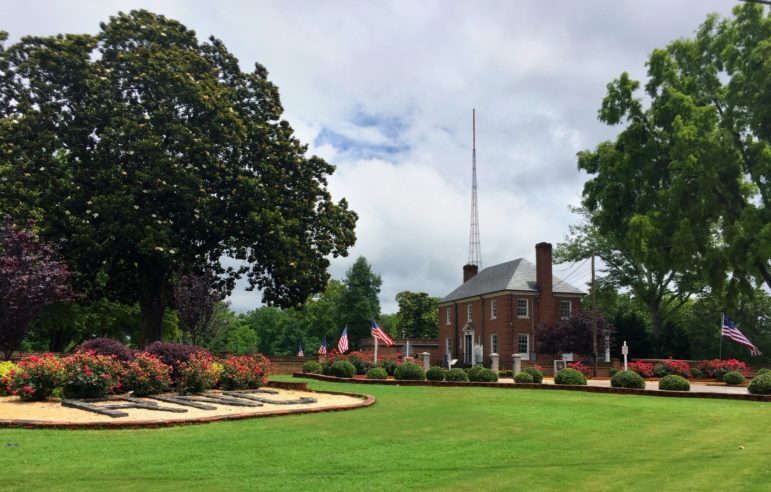
James Borden
The Raleigh National Cemetery
According to “Monuments to the Lost Cause” by Cynthia Mills, the driving force of the Wake County Association was apparently one Sophia Partridge (1817-1881), a New York native who had moved to Raleigh as a child. In 1846, she established “Miss Partridge’s Select School for Young Ladies” in the City of Oaks, and during the war had her students make bandages and dressings for wounded soldiers.
After the war, she is said to be the one who conceived the idea of finding a permanent home for interring the Confederate dead, the majority of which, at the time, were buried at the Rock Quarry site.
When the Association asked Raleigh resident Henry Mordecai to donate land for the cemetery with the intent of purchasing adjacent land, he is said to have responded: “The Ladies’ Memorial Association are welcome to as many acres of my land as they need for such a sacred purpose, without any consideration.”
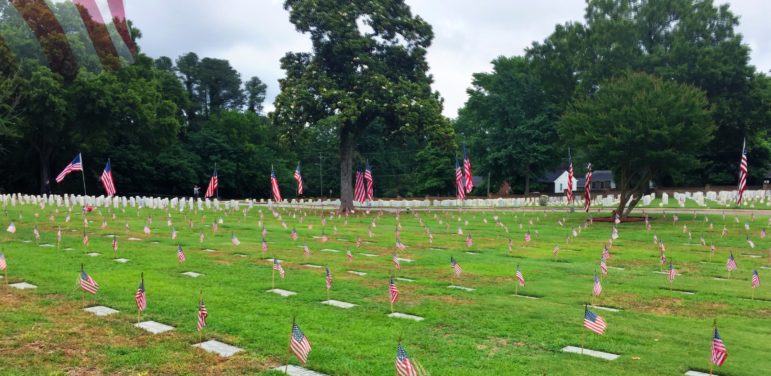
James Borden
5,983 veterans are interred at the Raleigh National Cemetery
The donated land was in the Oakwood section of Raleigh, and is today home to the Oakwood Cemetery. But back in 1866, the groundwork was still being laid for its establishment, and the Ladies Association was about to be hit with a hard deadline.
On February 20, 1867, the Association held a special meeting regarding the order to remove the Confederate soldiers from the Rock Quarry cemetery to make room for the Federal dead. In later years, the Raleigh National Cemetery became a place at which veterans of all U.S. wars were laid to rest.
On February 22, 1867, the Association requested the help, according to Mills, “of the Young, Middle-Aged and Old Men of Wake on the next Monday and Tuesday and longer if necessary to begin removal of the Confederate remains.”
It took longer. The process lasted through the end of March, during which time the Association praised the “gallant boys” doing the work, declaring “Your brows are already crowned with wreaths of laurel on each field from Bethel to Bentonsville, and you are now linking your names, in the memories of the fairer sex, with those marryed [sic] ones who never flinched, when duty called.”
Although the City of Raleigh was under Federal occupation, the Ladies Memorial Association of Wake County in May of 1867 staged an event to honor the Confederate dead, which was held downtown. In May of each year, this tradition has carried on at Oakwood Cemetery.
Across town at Raleigh National Cemetery, Memorial Day Events of their own are held. On Sunday, a memorial service was held; as luck would have it, the ceremony was held at 2 p.m., one of the brief periods of respite from the day’s rain.
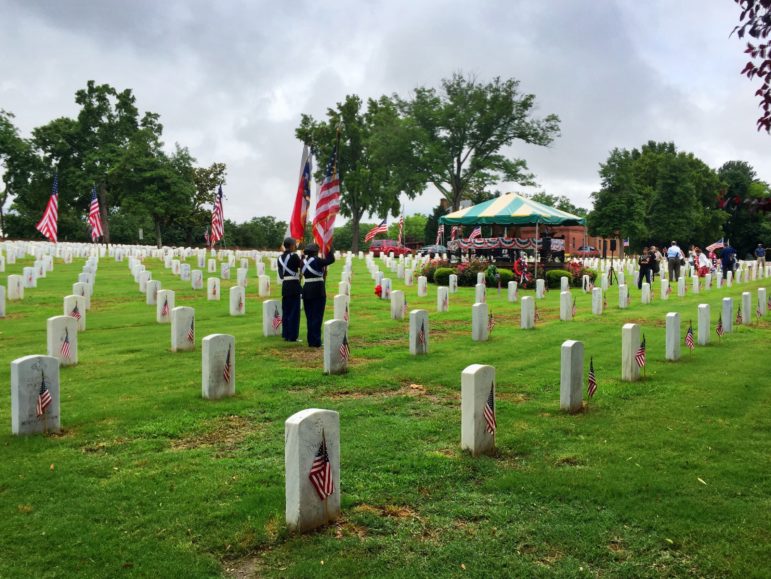
James Borden
A Memorial Day ceremony was held Sunday
